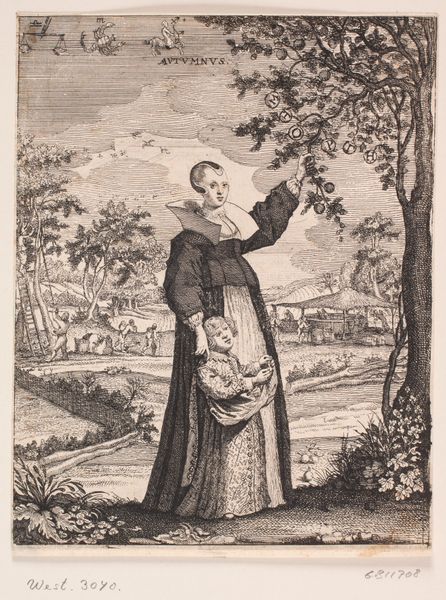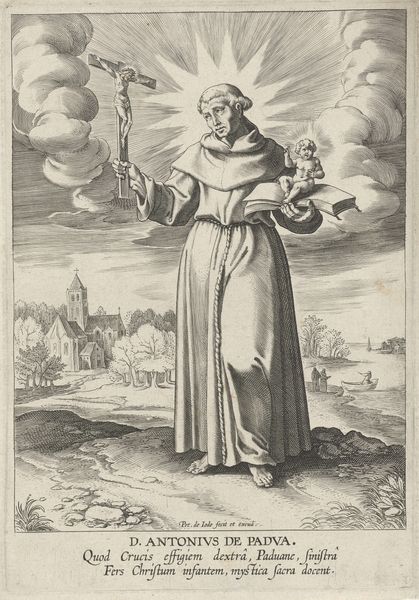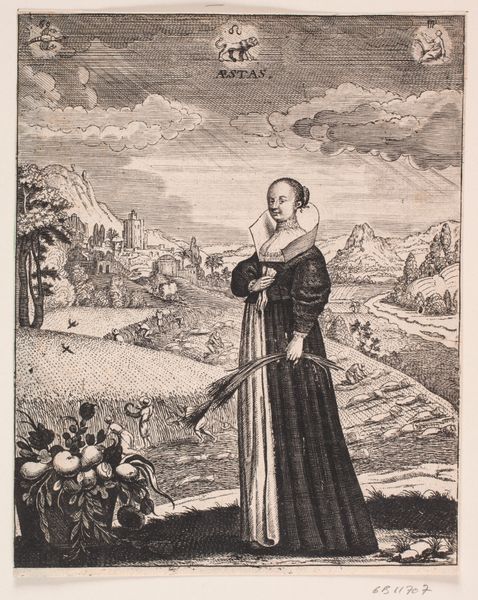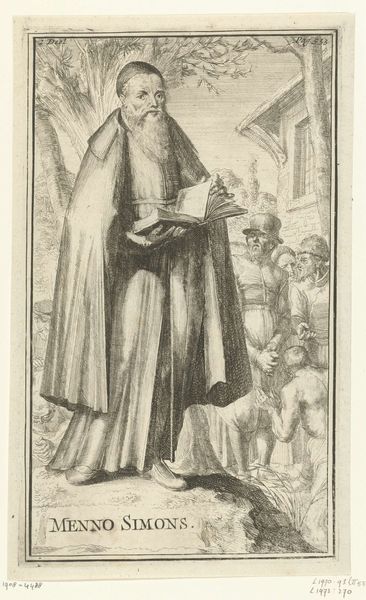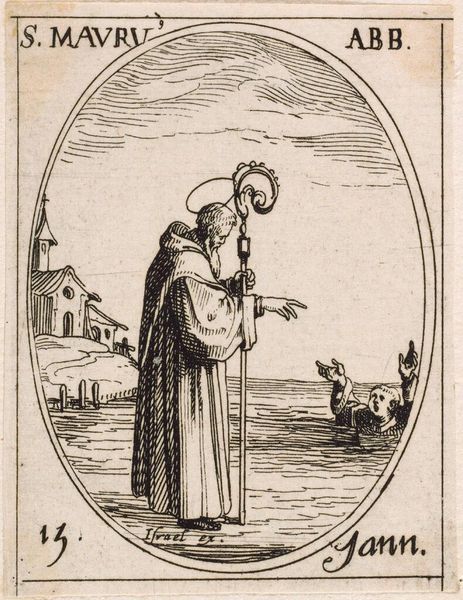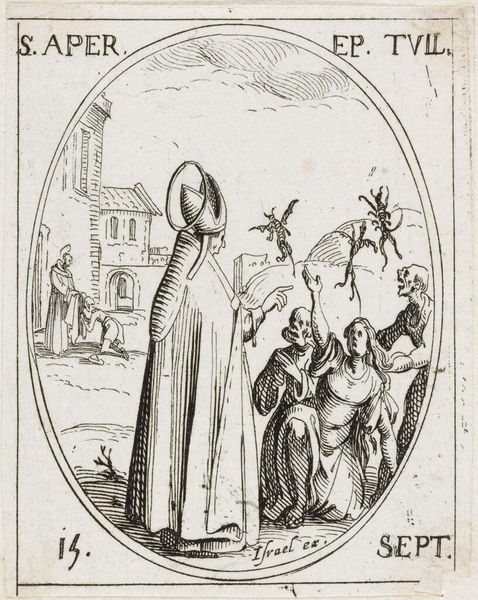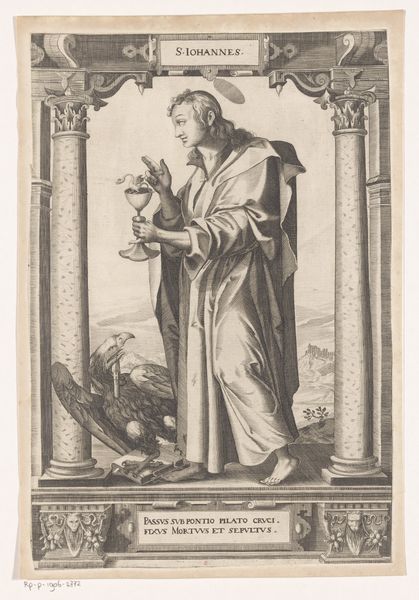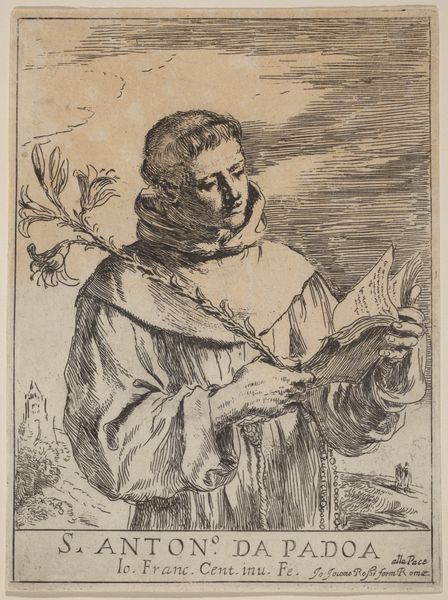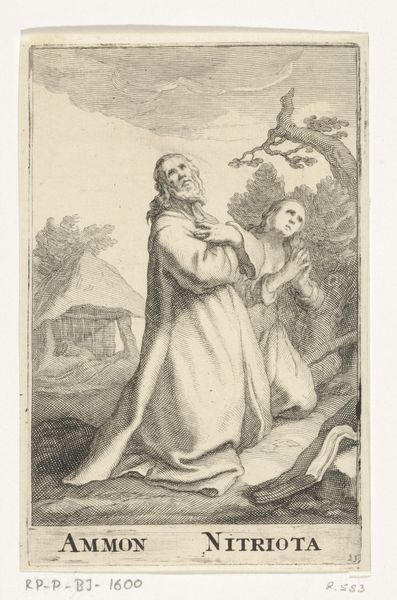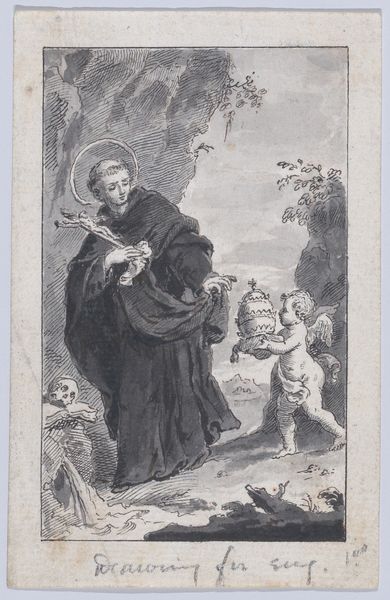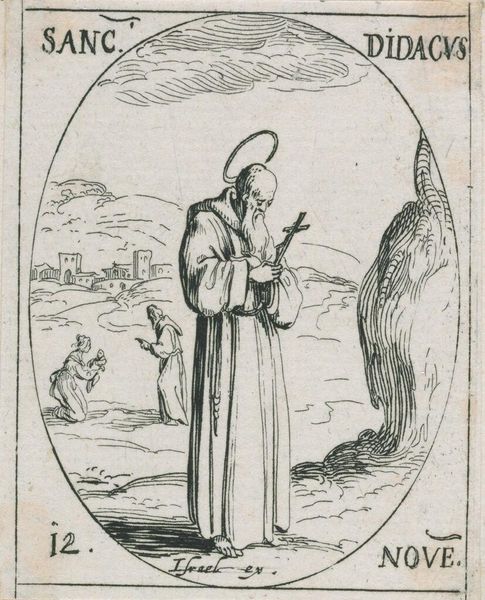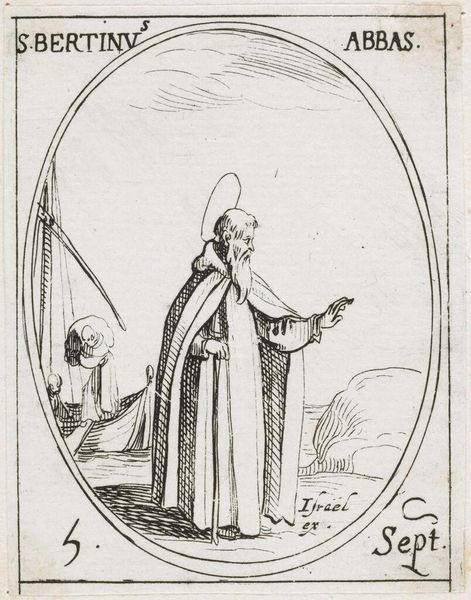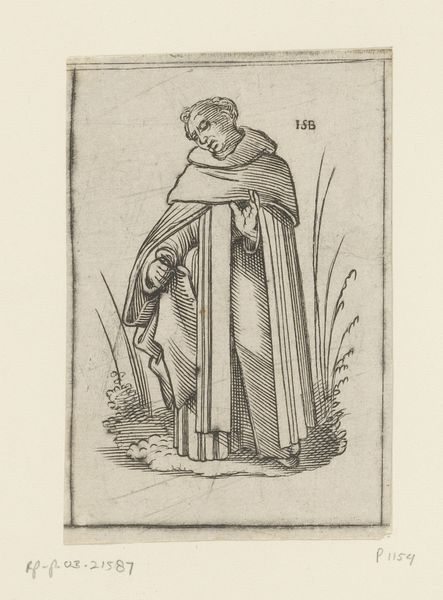
Efteråret. Portræt af Simon Paullis hustru, Elisabeth Fabricius 1648
0:00
0:00
print, engraving
#
portrait
#
ink drawing
#
baroque
# print
#
landscape
#
genre-painting
#
engraving
Dimensions: 171 mm (height) x 137 mm (width) (bladmaal)
Curator: Here we have Albert Haelwegh’s "Efteråret. Portræt af Simon Paullis hustru, Elisabeth Fabricius," made in 1648. It’s an engraving, a print, depicting a portrait within a broader landscape. Editor: My initial impression is of a scene both intimate and rigidly formal. There’s a curious tension between the carefully etched lines and the bucolic, pastoral imagery. Curator: Indeed. Haelwegh was a master of imbuing symbolic weight into his portraits. Elisabeth Fabricius, the wife of a prominent figure, is shown during the Autumn season. Above the image, he integrates signs of the Zodiac – Libra, Scorpio, and Sagittarius – all associated with this time of year. Editor: As an engraving, the artist meticulously carved into a metal plate. Think of the hours of labour required to render such precise detail – the tiny lines that build form and texture, and how this contrasts the harvesting activities in the background, hinting at different types of seasonal labour. Curator: Precisely. And note the loaded symbolism: Elisabeth plucks fruit from the tree – a clear visual metaphor alluding to abundance, harvest, and by extension, prosperity. Her hand gesture presents, while the boy gathers. Editor: It’s interesting how printmaking allowed for a wider dissemination of portraits like this, connecting it to networks of trade and exchange. And the formal presentation becomes crucial – constructing status and conveying messages to a broader audience. Curator: Absolutely. Consider, too, the specific placement of elements, such as Zodiac signs. Autumn, of course, carries layers of meaning – a period of completion, and transition. It hints at the cycles of life and mortality, but also, perhaps, at the continuation of legacy. Editor: Right, that sense of legacy is enforced materially, in its own longevity as a durable multiple: each print continues to carry its weight over time. Curator: Examining this image closely has me reflecting on how cultural memories are intertwined within even seemingly straightforward depictions of domestic life. Editor: I find myself contemplating the artist’s labor, its translation into an enduring material form, and how its meaning evolved over time, with each impression striking.
Comments
No comments
Be the first to comment and join the conversation on the ultimate creative platform.
